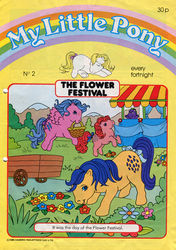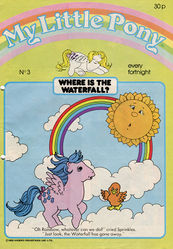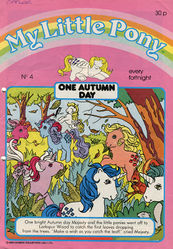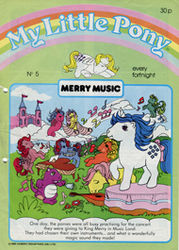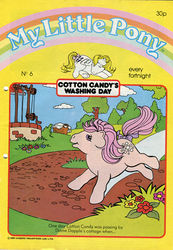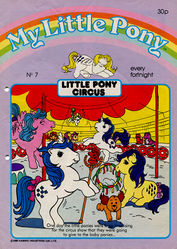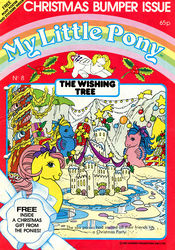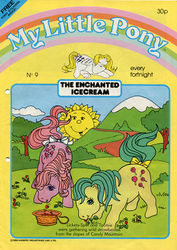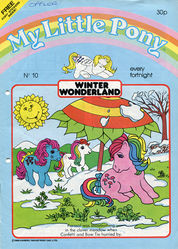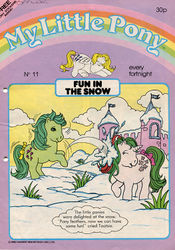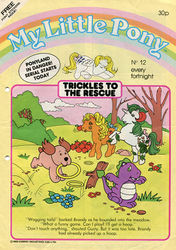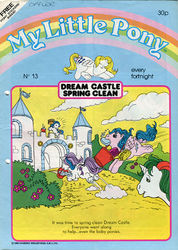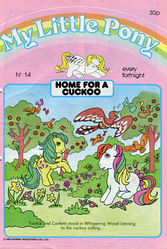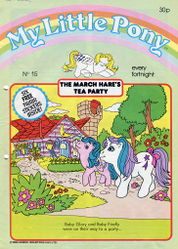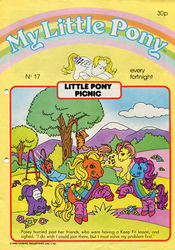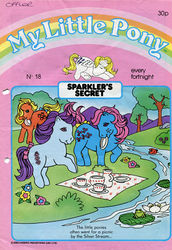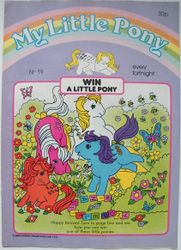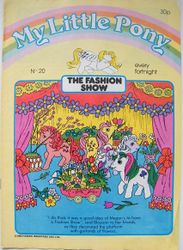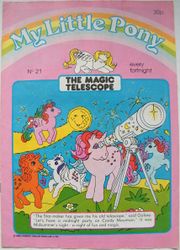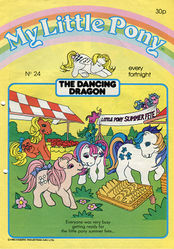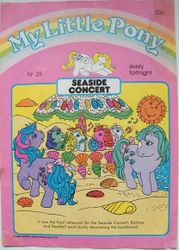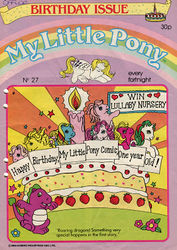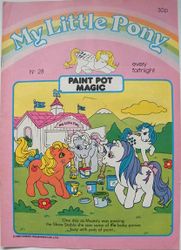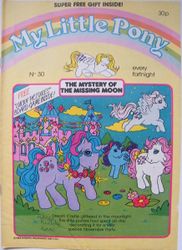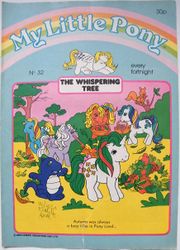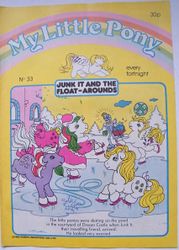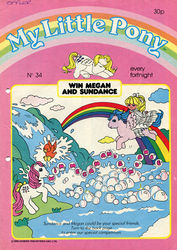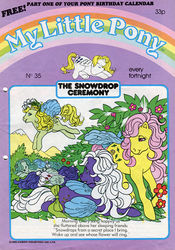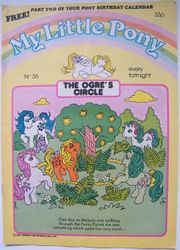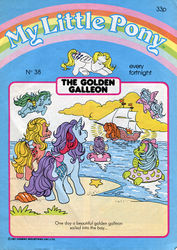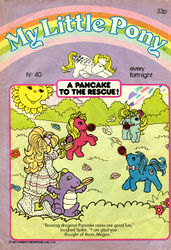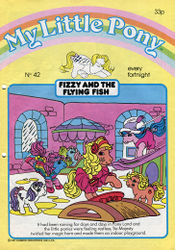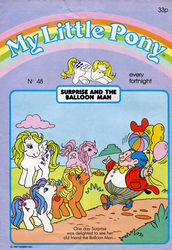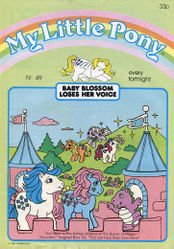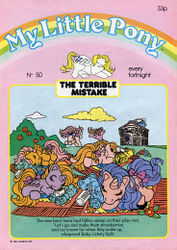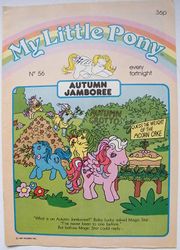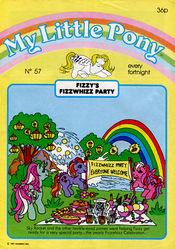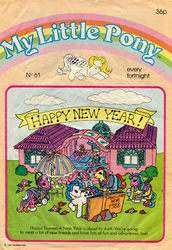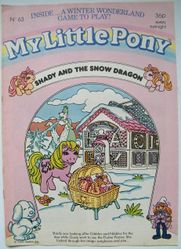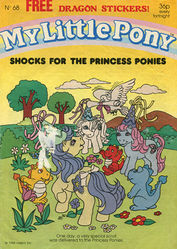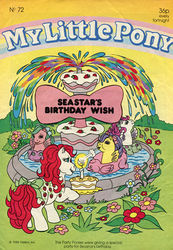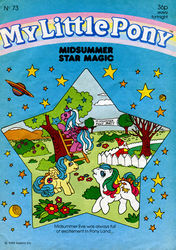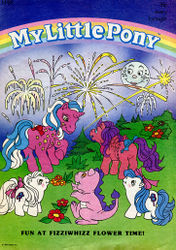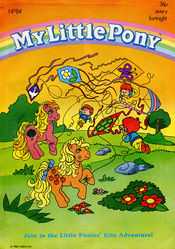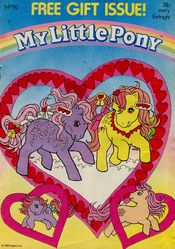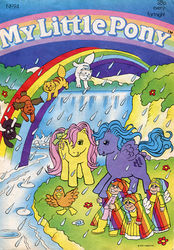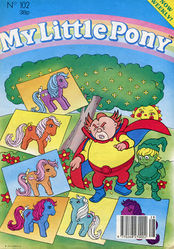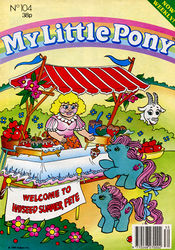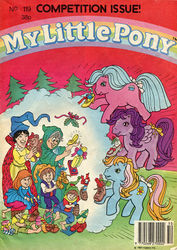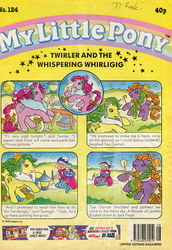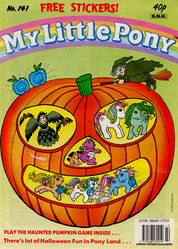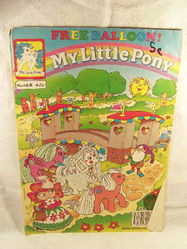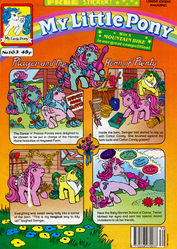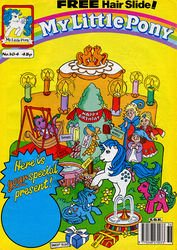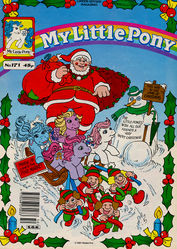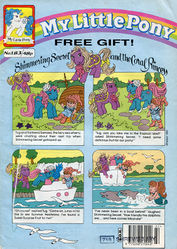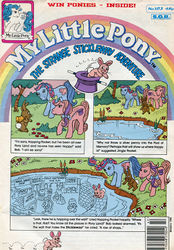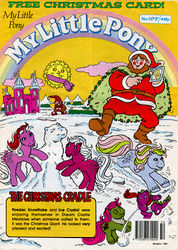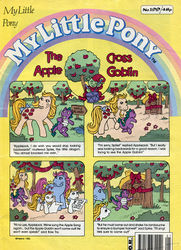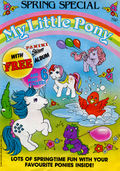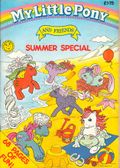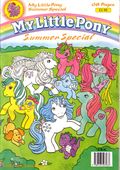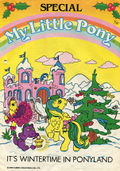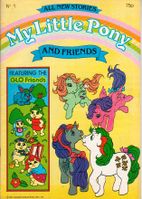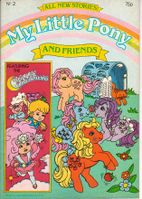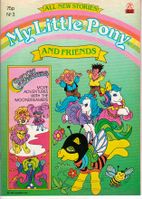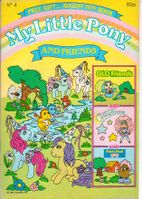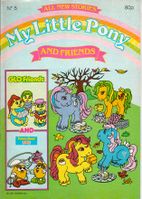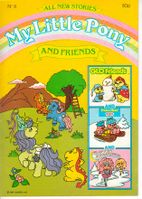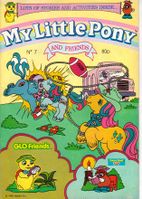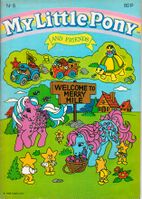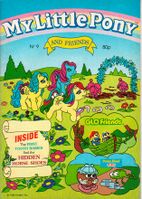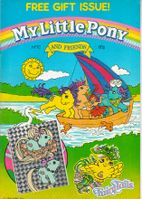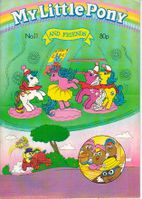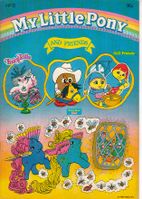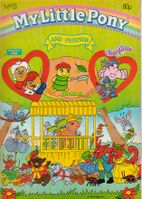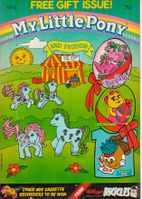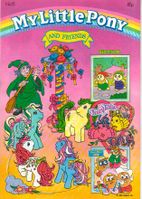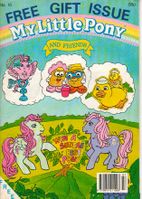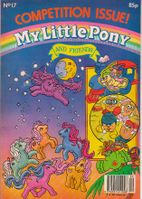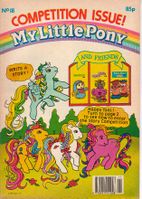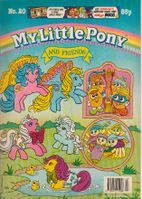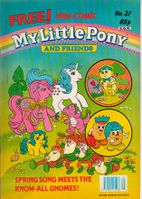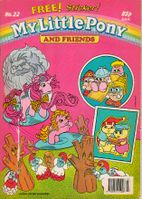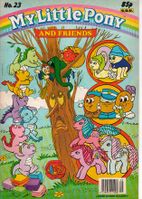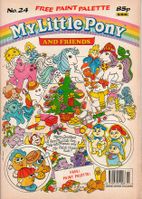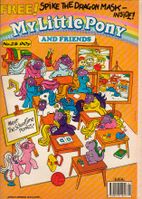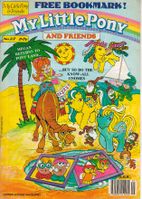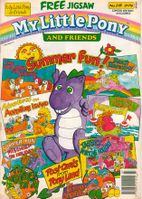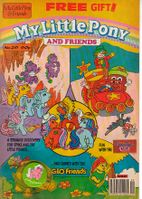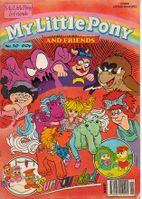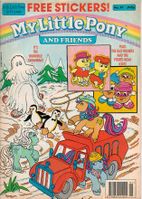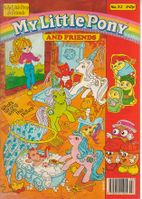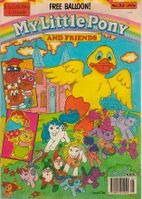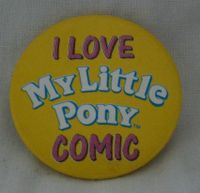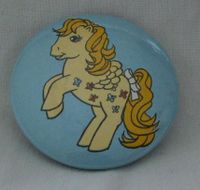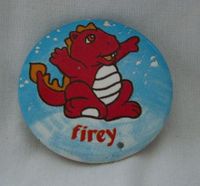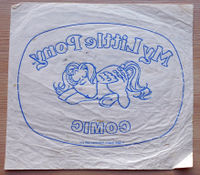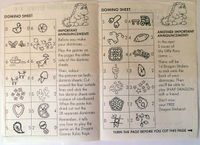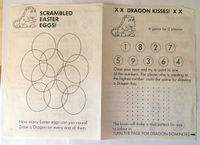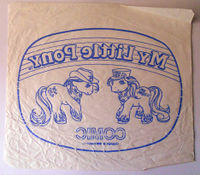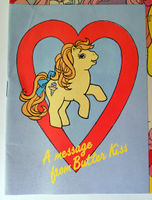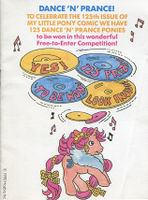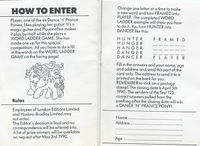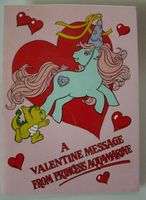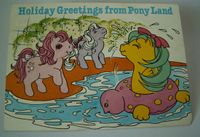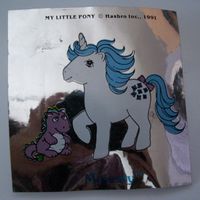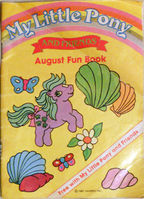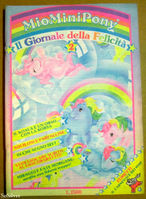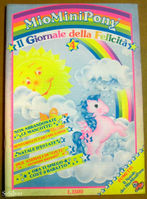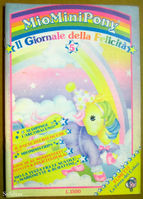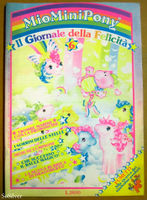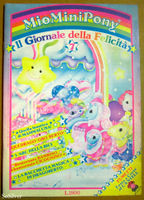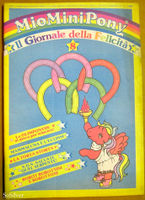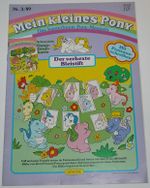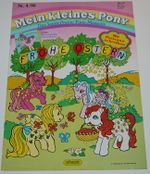Difference between revisions of "G1 Comic Books"
(→Comic Continuity) |
|||
| Line 7: | Line 7: | ||
The comics were usually produced fortnightly (every two weeks), though sometimes they switched to a weekly schedule. The two comic runs shared a common continuity, with the events of one series often being referred to in the second series. ''My Little Pony and Friends'' outlasted ''My Little Pony'' by about a six months. | The comics were usually produced fortnightly (every two weeks), though sometimes they switched to a weekly schedule. The two comic runs shared a common continuity, with the events of one series often being referred to in the second series. ''My Little Pony and Friends'' outlasted ''My Little Pony'' by about a six months. | ||
| − | London Limited Editions published both comic books. Judith Laverty was at the helm 1988, although it is not known if she was involved for the entire run of the comics. Unfortunately the writers and artists were not credited in the comics. The only confirmed contributor is Mike Wild (writer). | + | London Limited Editions published both comic books. Judith Laverty was at the helm 1988<ref>J. Laverty, personal communication, November 5, 1988.</ref>, although it is not known if she was involved for the entire run of the comics. Unfortunately the writers and artists were not credited in the comics. The only confirmed contributor is Mike Wild (writer). |
Other European countries, such as a Germany, Finland, and Holland, also had comic books. The stories and illustrations were the same as in the UK comics, translated into the appropriate language. These comic books were not released in the same order as the UK comics, however, and not every story made it to other countries. The United States and other non-European countries did not have any comic books at all. | Other European countries, such as a Germany, Finland, and Holland, also had comic books. The stories and illustrations were the same as in the UK comics, translated into the appropriate language. These comic books were not released in the same order as the UK comics, however, and not every story made it to other countries. The United States and other non-European countries did not have any comic books at all. | ||
Revision as of 21:06, 21 January 2013
The UK had an extensive run of G1 MLP comic books, featuring stories, puzzles, Activity Club pages, special contests, and more. Two separate comic books, My Little Pony and My Little Pony and Friends, ran at the same time. My Little Pony and Friends included comics about the Moondreamers, Potato Head Kids, Fairy Tail Birds, and GLO Friends in addition to stories about the ponies.
Contents
History
The first comic, called simply My Little Pony (1985 to 1993) lasted about 222 issues (and possibly up to 224 issues). A second comic book, My Little Pony and Friends (1987 to 1994) had at least 51 issues.
The comics were usually produced fortnightly (every two weeks), though sometimes they switched to a weekly schedule. The two comic runs shared a common continuity, with the events of one series often being referred to in the second series. My Little Pony and Friends outlasted My Little Pony by about a six months.
London Limited Editions published both comic books. Judith Laverty was at the helm 1988[1], although it is not known if she was involved for the entire run of the comics. Unfortunately the writers and artists were not credited in the comics. The only confirmed contributor is Mike Wild (writer).
Other European countries, such as a Germany, Finland, and Holland, also had comic books. The stories and illustrations were the same as in the UK comics, translated into the appropriate language. These comic books were not released in the same order as the UK comics, however, and not every story made it to other countries. The United States and other non-European countries did not have any comic books at all.
Comic Continuity
Although they featured many of the same pony characters as the television shows, the comic books were clearly set in their own continuity.
Some of the differences from the cartoons:
- Almost every pony had magic, not just unicorns
- Unicorns did not have the ability to wink (teleport)
- Majesty, never seen in animated form, was in almost every comic.
- The ponies never moved into Paradise Estate, they just used it as a vacation home
- Danny and Molly never showed up in the comics, although Megan did.
- Many of the pony personalities were different. Wind Whistler was rather silly, Shady was more confident, etc.
- Larger cast of ponies and a recurring cast of non-pony characters.
The comic book universe shares many similarities with the G1 backcards. Most ponies have whatever character traits and magical abilities they had in their backcard story. (Medley can make the sound of a harp by waving her tail, for example, and Cotton Candy has a sweet tooth for flowers that gets her into trouble.) The comics share the same continuity as the UK children's books published by World International Publishing Limited.
Almost all Year 2 and Year 3 ponies appeared in the comics, even ponies who were never sold in the UK. By Year 4 most of the newly introduced ponies were ones available in local shops.
Both magazines eventually switched from the dragons-and-castles fantasy world of early G1 to the more modern world of My Little Pony Tales.
My Little Pony Comic Covers
- My Little Pony Comic gallery
My Little Pony Comic Seasonal Special Covers
- Spring Specials gallery
- Summer Specials gallery
- Winter Specials gallery
My Little Pony and Friends Comic Covers
- My Little Pony Comic gallery
Free Gifts (from either comic)
- G1 Comic Free Gift gallery
Comb (also available with Merry Treats)

